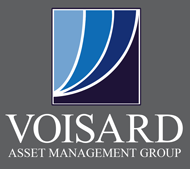Roth IRA conversions can be a powerful tax-saving strategy; however, it is important to be aware of how they work and who they are best suited for before the conversion. While most people’s goal is to minimize their tax liability annually, what if it made sense to pay taxes on retirement distributions sooner rather than later?
What is a Roth IRA Conversion?
A Roth IRA conversion is a tax planning strategy that involves moving funds from a Traditional IRA to a Roth IRA Conversion during advantageous tax years. Individuals experience these advantageous tax years when they are in a lower tax bracket than projected for future years. The strategy aims to capitalize on the lower tax bracket by paying taxes today instead of waiting for anticipated higher tax liability in the future. Paying the tax liability for the transaction out of pocket enhances the efficiency of this approach, allowing the maximum amount of funds to transfer from the Traditional to the Roth IRA Conversion. It’s crucial to note that Roth IRA conversions must originate from Traditional IRAs and cannot be sourced from other funding sources such as after-tax assets. Another advantage of the Roth IRA conversion strategy over making a Roth IRA contribution is the absence of a requirement for earned income.
It is important to note that while tax rates and tax brackets are subject to change, which adds a layer of complexity to the strategy, this strategy still proves to be effective for many individuals.
When Does it Make Sense?
During what is known as the “Retirement Conversion Window,” individuals who have retired from work but have not filed for Social Security and are not yet of RMD age (73) commonly execute the Roth IRA conversion strategy. This is typically the point in a retiree’s life that their taxable income will be at its lowest point. If a retiree is in a lower tax bracket at the beginning of their retirement distributions, it makes sense to convert funds from a Traditional IRA, maximizing the lower tax bracket, and taking advantage of the Roth IRA tax-free growth forever.
Why a Roth IRA conversion strategy can be effective?
While this is the most common example of where the strategy can be effective, there are other scenarios where the strategy may make sense. Some examples include maximizing the amount of your estate passed to your heirs or planning for business owners with irregular income streams. It is important to communicate with your financial advisor and/or tax professional to ensure that you are not missing out on potential tax benefits or accidentally negatively impacting your tax landscape. It is important to note that the impending tax sunset at the end of 2025 may present additional opportunities and provide strong reasons to discuss this strategy with a professional today.
Summary of Benefits Part 1:
Key reasons you may implement this strategy include:
- Tax Savings – If you’re in a low tax bracket now, but expect to be in a higher tax bracket in the future, it may be advantageous to convert a specific amount of dollars from your traditional IRA to a Roth IRA. For example, if you’re in the 12% tax bracket now, but expect to be in the 22% tax bracket in the future, you could save 10 cents on every dollar you convert within the 12% bracket window. The converted dollars will then grow tax-free if invested.
- Retirement Income Flexibility – Roth IRAs don’t have RMDs unless inherited, so you can withdraw funds from the account at any time during retirement distributions without having to worry about paying taxes on the distribution. In years where you may have higher withdrawal needs or a significant tax event, the Roth IRA provides you with an additional bucket to draw from without increasing your tax liability.
Summary of Benefits Part 2:
- Reduced RMDs – Not only do Roth IRAs Conversion not have RMDs, but moving funds from your Traditional IRA to your Roth IRA also reduces future RMDs from your Traditional IRA. Once again, this provides you with an additional level of income tax flexibility during retirement.
- Estate Planning Benefits – Roth IRA dollars pass to heirs tax-free.Even though beneficiaries must withdraw the Roth IRA funds within 10 years of inheriting the account, they won’t incur taxes on these retirement distributions. This tax-saving benefit can significantly impact heirs, whose tax situation may differ greatly from yours as they are often still in their working years when they inherit assets.
Conclusion
Voisard Asset Management focuses on taking advantage of tax planning opportunities on behalf of our clients. If you are wondering if a Roth IRA conversion strategy may make sense per your situation or have additional tax-planning questions, please do not hesitate to reach out to our team. We stand ready and available to assist.



